Table of Contents
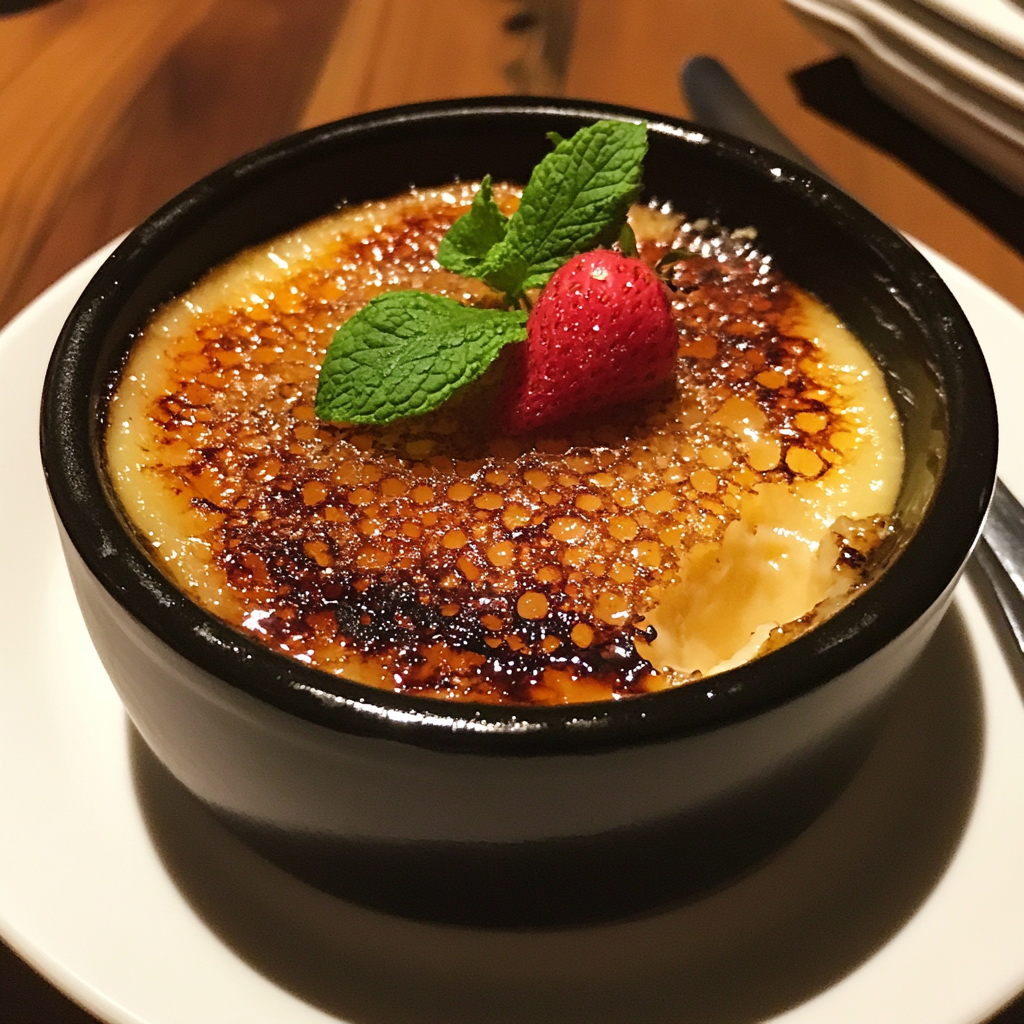
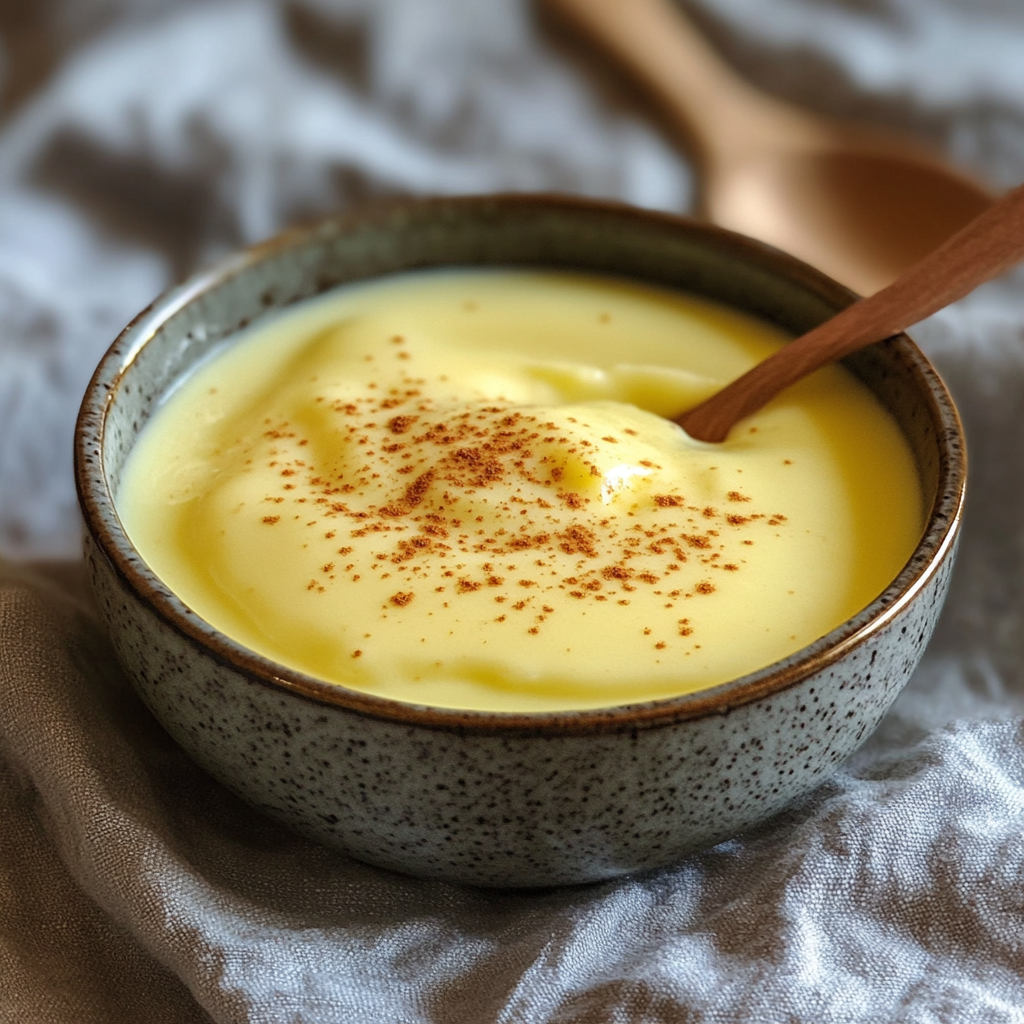
While crème brûlée and custard share a creamy texture and are both beloved desserts, they differ significantly in preparation, flavor, and purpose. Understanding these distinctions can deepen your appreciation for these iconic dishes and help you choose the perfect dessert for any occasion. In the following sections, we will answer the question “What’s the Difference Between Crème Brûlée and Custard?”.
Introduction to Crème Brûlée and Custard
Both crème brûlée and custard are celebrated desserts that showcase the versatility of eggs, sugar, and dairy. While custard is a foundational recipe used in both savory and sweet dishes worldwide, crème brûlée is a refined variation of custard that features a signature caramelized sugar topping, making it a favorite for dessert enthusiasts.
Understanding the historical origins and cultural evolution of these desserts sheds light on their similarities and differences. For a deeper dive into the characteristics of crème brûlée, explore what crème brûlée is made of.
Historical Origins of Crème Brûlée
It, meaning “burnt cream” in French, first appeared in 17th-century French cuisine, although its origins are still debated. Some credit France, while others trace similar recipes to England’s Trinity Cream and Spain’s Crema Catalana. Its defining characteristic, the caramelized sugar crust, set it apart from other custards of the time.
This luxurious dessert became popular in the kitchens of aristocrats and has since evolved into a staple of fine dining menus worldwide. Curious about its flavor profile? Learn more about what crème brûlée tastes like.
The Evolution of Custard Across Cultures
Custard has ancient roots, with the earliest recipes originating in Rome, where eggs and milk were combined to create a creamy base for both savory and sweet dishes. As it spread across Europe, it evolved into diverse forms:
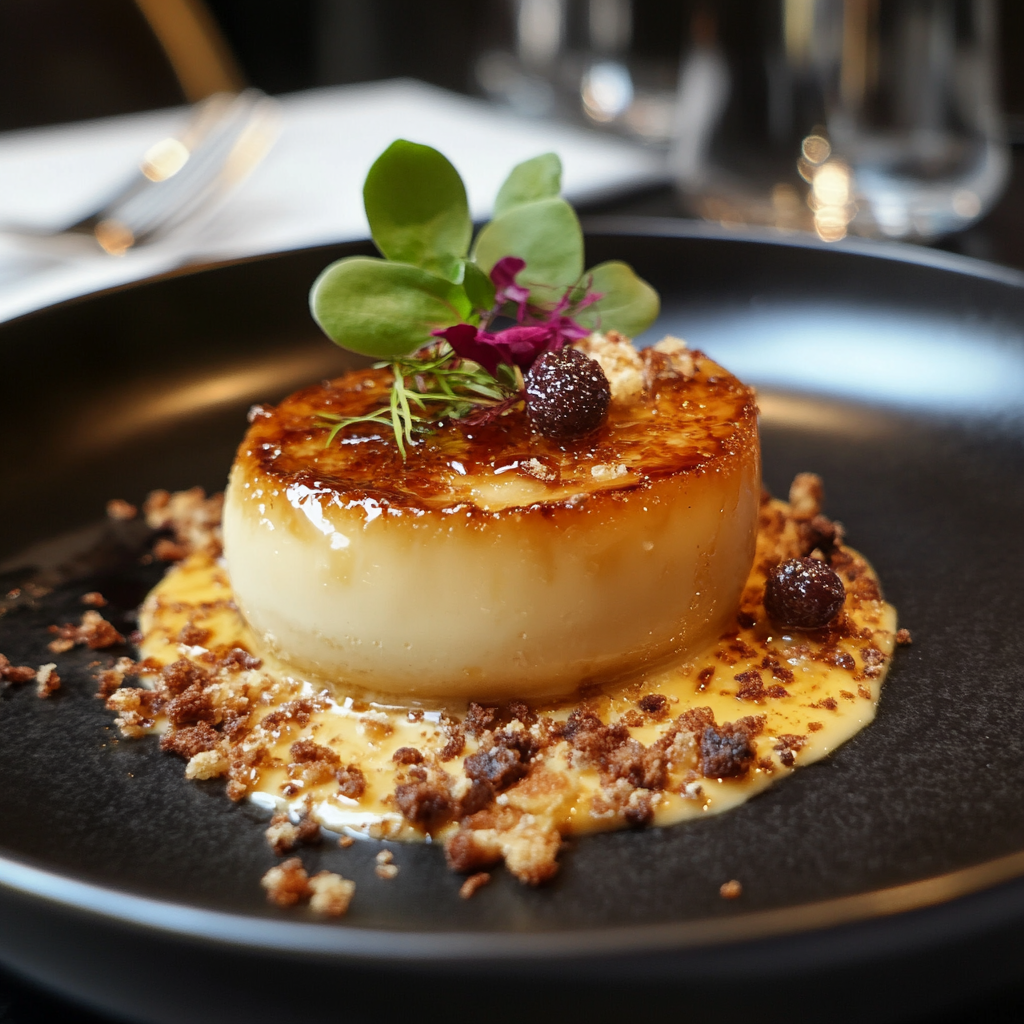
- In England: Custard became a key ingredient in traditional dishes like trifle and tarts. It also served as a base for baked goods and pies.
- In France: The culinary arts elevated custard into refined creations like crème caramel and pastry creams.
- In Asia: Custard took on unique flavors such as pandan and coconut, appearing in dishes like Thai sangkaya.
- In the Americas: Custard became a favorite in flan and puddings, using local ingredients like corn or pumpkin.
To see custard’s versatility in action, explore recipes like flan and other custard variations for inspiration.
Key Differences
1. Origins and History
- Crème brûlée: Originating in France, this dessert was first documented in the 17th century. Its name, meaning “burnt cream,” refers to the caramelized sugar topping that distinguishes it. It has since become a hallmark of French cuisine, celebrated for its elegance and simplicity.
- Custard: With roots tracing back to ancient Rome, custard is one of the oldest culinary creations. Romans used eggs and milk to create savory dishes, while the sweeter versions evolved over centuries. Custard became a staple in European kitchens, forming the base for puddings, pies, and sauces.
2. Ingredients and Texture
The choice of ingredients plays a significant role in differentiating these desserts.
- Crème brûlée: The primary ingredients are heavy cream, egg yolks, sugar, and vanilla. The use of heavy cream results in a luxuriously rich and dense texture, ideal for creating a dessert that feels indulgent. The caramelized sugar layer adds a contrasting crunch, enhancing the overall experience.
- Custard: Typically made with milk, eggs, and sugar, custard has a lighter and smoother consistency. Depending on the recipe, additional thickeners like cornstarch may be used to alter its texture. Custard is often flavored with vanilla, but it can also incorporate spices like nutmeg or cinnamon.
3. Preparation Techniques
Crème Brûlée Preparation:
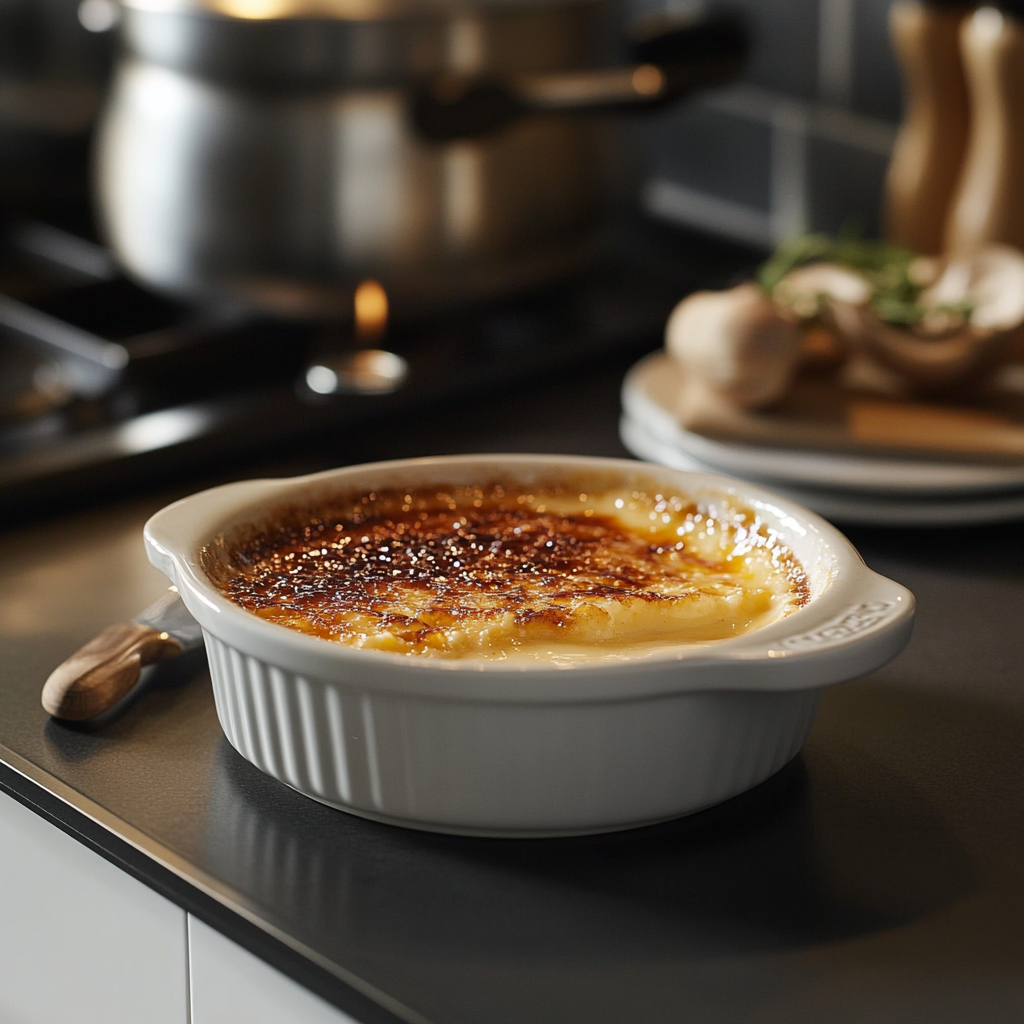
- Mixing the Ingredients: Heavy cream is heated and combined with sugar, vanilla, and whisked egg yolks.
- Baking: The mixture is poured into ramekins and baked in a water bath, which ensures even cooking and prevents curdling.
- Caramelizing the Sugar: Once cooled, sugar is sprinkled on top and caramelized using a torch or broiler, creating a hard, crackable crust that contrasts beautifully with the creamy base.
Custard Preparation:
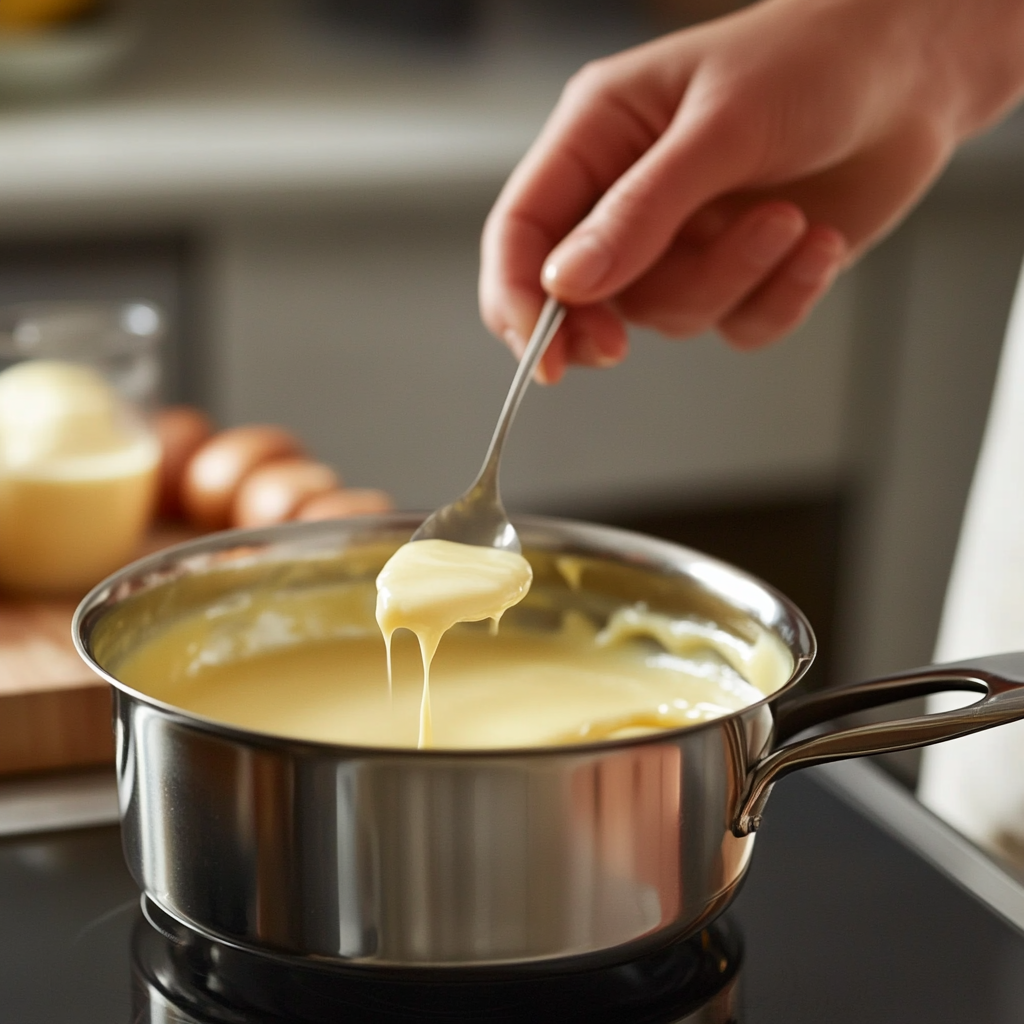
- Types of Custard: Custards are either stirred (cooked on the stovetop) or baked (set in the oven). Stirred custards, like pastry cream, are often used in tarts, while baked custards, such as flan, are served as standalone desserts.
- Thickening Process: Stirred custards require constant attention to prevent curdling, while baked custards are cooked slowly at low temperatures.
- Versatility: Custards are the backbone of many dishes, such as crème caramel, quiches, and even ice cream bases.
Mastering the art of caramelization is crucial for creating crème brûlée. Explore techniques for caramelization to elevate your dessert skills.
4. Texture and Flavor Profiles
- Crème brûlée: This dessert is defined by its creamy, rich texture and the satisfying crunch of its caramelized sugar topping. The flavor is decadent, with notes of vanilla and caramelized sugar, making it a favorite for those who love indulgent desserts.
- Custard: The texture of custard can vary depending on the preparation. Baked custards are smooth and firm, while stirred custards are creamy and pourable. The flavor is subtle and versatile, easily enhanced by spices, fruits, or other flavorings.
5. Popular Variations
Both crème brûlée and custard offer opportunities for experimentation.
- Crème brûlée: While the traditional vanilla version remains a favorite, variations like chocolate, espresso, and citrus add exciting twists. Seasonal flavors, such as pumpkin spice or gingerbread, are popular during the holidays.
- Custard: As a base, custard can be transformed into numerous dishes, including flan, crème caramel, custard pies, and even ice cream. It also serves as a filling for pastries like éclairs and profiteroles.
Nutritional Differences
While both crème brûlée and custard are indulgent desserts, their nutritional profiles differ based on ingredients and preparation methods. Understanding these differences can help you make informed choices about which dessert fits your dietary preferences.
Comparing Calories and Macronutrients
The primary distinction in the nutritional profiles of crème brûlée and custard lies in their calorie content and macronutrient composition:
- Crème Brûlée:
Made with heavy cream, it is higher in calories and fat compared to traditional custard. A single serving typically contains around 300–400 calories, with a significant portion coming from saturated fats due to the cream. The caramelized sugar topping adds additional calories from sugar. - Custard:
Using milk instead of cream, custard tends to be lighter, with about 150–250 calories per serving. It is lower in fat but still rich in protein from the eggs. Variations like flan or baked custard may have added sugar syrups, which can increase calorie content.
If you’re looking for creative variations to try, explore this classic crème brûlée recipe to understand how ingredient choices impact nutrition.
Healthier Alternatives for Both Desserts
For those who wish to enjoy these desserts with fewer calories or healthier ingredients, consider the following modifications:
- For Crème Brûlée:
- Substitute heavy cream with a lighter option, such as half-and-half or unsweetened coconut cream.
- Use a natural sweetener like stevia or monk fruit to reduce added sugar in the base.
- Torch less sugar on top for a thinner caramelized layer.
- For Custard:
- Swap whole milk for low-fat or plant-based alternatives like almond or oat milk.
- Use a sugar substitute to reduce the overall glycemic impact.
- Add nutrient-rich flavors such as pumpkin, cinnamon, or matcha for an antioxidant boost.
To elevate your custard game while keeping it health-conscious, explore other custard-based recipes that balance flavor and nutrition.
By adjusting the ingredients and preparation methods, you can enjoy both desserts without compromising on taste or health. Whether you’re indulging in the richness of crème brûlée or the lightness of custard, these tips ensure a more balanced approach to your favorite treats.
The difference In Presentation Styles
The presentation of a dessert can enhance its appeal, and crème brûlée and custard are no exceptions. Each dessert boasts unique serving styles that reflect its character, from the refined elegance of crème brûlée to the versatile simplicity of custard.
Crème Brûlée’s Signature Caramelized Topping
The hallmark of crème brûlée is its caramelized sugar topping, which is torched to create a thin, glossy crust. This topping not only adds texture but also provides visual appeal, with its golden, glass-like finish. Key aspects of crème brûlée’s presentation include:
- Individual Servings: Typically served in small ramekins, crème brûlée is perfect for personal portions. The ramekins also ensure even baking and allow for an elegant touch in plating.
- The Crack Factor: One of the most satisfying parts of crème brûlée is breaking through the caramelized crust to reveal the creamy custard beneath. This dramatic contrast elevates the dining experience.
Custard’s Range of Serving Options
In contrast, custard is a versatile dessert that can be served in a variety of ways, depending on its form and use. Its adaptability makes it a staple in kitchens worldwide. Popular serving styles include:
- Baked Custard: Often served in individual ramekins or as a whole dish, baked custard is typically garnished with fresh fruit, whipped cream, or a drizzle of caramel sauce.
- Stirred Custard: Used as a base for pies, trifles, or puddings, stirred custard is often poured over desserts or served alongside pastries for added richness.
- Decorative Molds: Some custards, like flan, are set in molds and inverted onto plates, showcasing a glossy caramel layer on top. This makes them visually stunning for dinner parties.
For creative ways to serve custard, consider exploring recipes that incorporate it into unique dishes, such as flan and other custard-based desserts.
Both desserts shine in their own ways—crème brûlée with its refined individual servings and crunchy topping, and custard with its versatility and adaptability to any culinary need. Whether you’re looking for sophistication or comfort, these presentation styles ensure that each dessert leaves a lasting impression.
Common Misconceptions
Is Crème Brûlée a Type of Custard?
Yes, it falls under the category of custard due to its egg-and-dairy base. However, it is its preparation method and caramelized sugar topping that give it a unique identity.
Can Custard Only Be Used in Desserts?
No, custard’s versatility extends beyond sweet dishes. Savory custards, such as those used in quiches, demonstrate its adaptability in both sweet and savory contexts.
Frequently Asked Questions
What is the difference between custard and crème brûlée?
The key difference between custard and crème brûlée lies in their preparation and presentation. Custard is a broad term for a mixture of eggs, milk, and sugar, often used as a base for desserts like flan, pudding, or pastry cream. It can be baked or stirred, depending on the dish.
On the other hand, crème brûlée is a specific type of custard made with heavy cream, egg yolks, sugar, and vanilla. What sets it apart is the caramelized sugar topping, which is torched to create a satisfying, crackable crust. If you’d like to try making it yourself, check out this classic crème brûlée recipe for a step-by-step guide.
Is crème brûlée served warm or cold?
It is typically served cold, with the exception of its caramelized sugar topping, which is torched just before serving. The contrast between the chilled, creamy custard and the warm, crunchy caramelized sugar layer adds to its appeal. To learn more about the dessert’s preparation, check out this guide to perfecting crème brûlée.
Is crème brûlée just flan?
No, this recipe and flan are distinct desserts despite some similarities. Both are custard-based, but flan has a soft caramel sauce that is poured over the custard after it is inverted from its mold. In contrast, crème brûlée features a hardened caramelized sugar crust, making it texturally unique.
What is the English version of crème brûlée?
The English version of crème brûlée is often referred to as “burnt cream.” This translation highlights its defining feature: the caramelized sugar crust. In England, a similar dessert called Trinity Cream was served at Trinity College, Cambridge, and is considered a predecessor to modern crème brûlée.
If you’re curious about the origins of this dessert, delve into what crème brûlée is made of for a deeper understanding.
Conclusion
Both crème brûlée and custard are iconic in their own ways. While custard’s versatility makes it a staple in countless recipes, crème brûlée stands out as a show-stopping dessert. Understanding their differences allows you to enjoy and experiment with these timeless treats.
For a step-by-step guide to creating crème brûlée, visit this detailed recipe and start your culinary adventure today!

